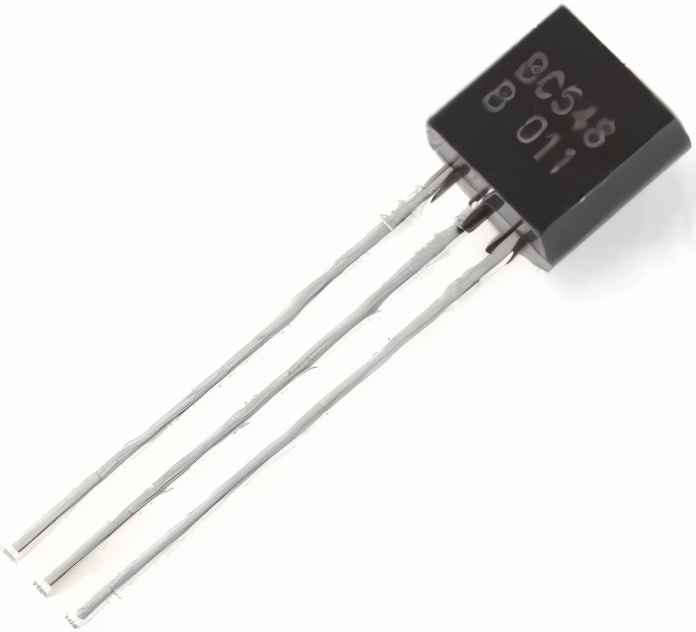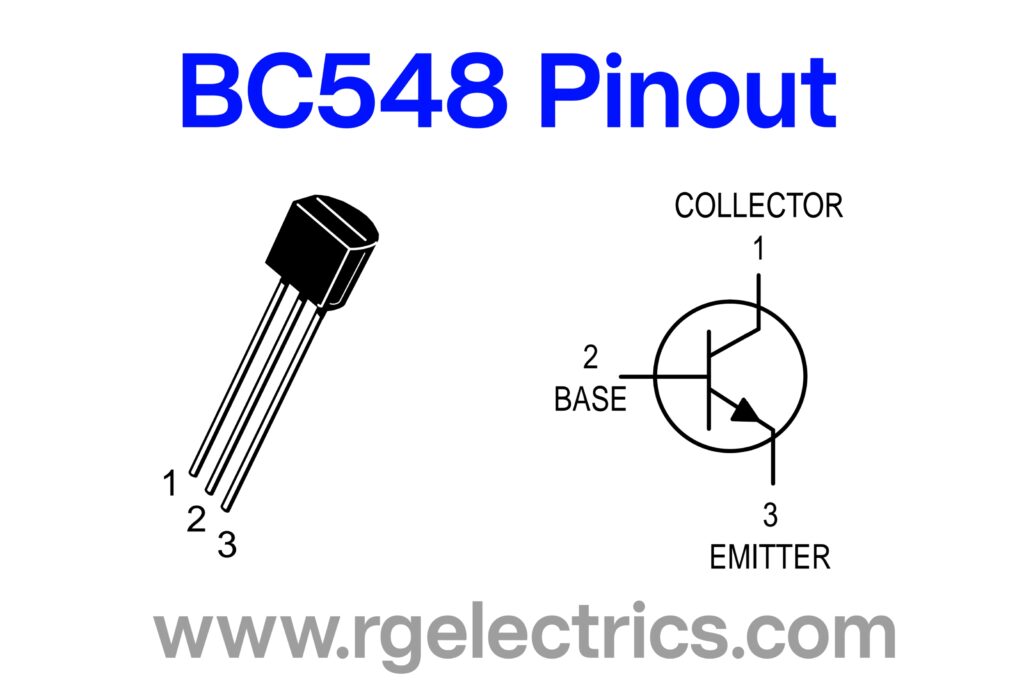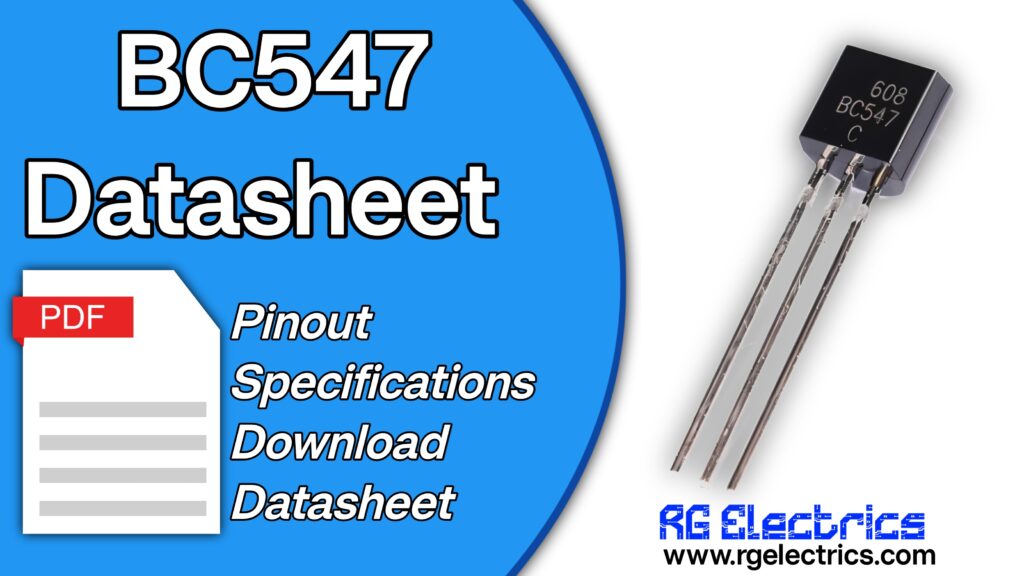Table of Contents
Introduction
The BC548 is one of the most popular NPN bipolar junction transistors (BJT) used in low current and low voltage electronic circuits. It is a general-purpose transistor widely used for switching and amplification. This transistor belongs to the BC546–BC550 family, which is known for reliability and versatility in analog and digital electronic designs. The BC548 can handle a maximum collector current of 100 mA and a collector-emitter voltage up to 30 V, making it suitable for a wide range of applications in both educational and professional projects.

In electronic circuits, the BC548 is commonly used in audio amplifiers, sensor circuits, and control systems where low noise and good gain are required. Its DC current gain (hFE) typically ranges between 110 and 800, which provides excellent amplification capabilities. Because of its compact TO-92 package, it is easy to integrate on breadboards and PCBs for prototype development. Additionally, the BC548 is preferred by hobbyists and circuit designers for its stable operation, low leakage current, and affordable cost.
BC548 Pinout
The BC548 transistor has three pins, namely Collector, Base, and Emitter. These pins are responsible for current flow and transistor control. When the base receives sufficient current, it allows a much larger current to flow from the collector to the emitter, enabling the transistor to work as a switch or amplifier.
| Pin Number | Pin Name | Description |
|---|---|---|
| 1 | Collector (C) | Current enters through the collector and flows toward the emitter when the transistor is active. |
| 2 | Base (B) | This terminal controls the transistor’s switching and amplifying operation by applying a small input current. |
| 3 | Emitter (E) | Current flows out from this terminal; it is usually connected to the ground in NPN configurations. |

When viewed from the flat side of the TO-92 package, the pins are arranged as 1 – Collector, 2 – Base, 3 – Emitter.
Electrical Characteristics
| Parameter | Symbol | Value | Unit |
|---|---|---|---|
| Collector–Emitter Voltage | V<sub>CE</sub> | 30 | V |
| Collector–Base Voltage | V<sub>CB</sub> | 30 | V |
| Emitter–Base Voltage | V<sub>EB</sub> | 5 | V |
| Collector Current | I<sub>C</sub> | 100 | mA |
| DC Current Gain | h<sub>FE</sub> | 110–800 | — |
| Transition Frequency | f<sub>T</sub> | 150 | MHz |
| Power Dissipation | P<sub>tot</sub> | 500 | mW |
| Junction Temperature | T<sub>j</sub> | 150 | °C |
Features
- Type: NPN Silicon Transistor
- Designed for low noise and high gain applications
- Suitable for intermediate frequency and audio frequency amplification
- Low leakage current ensures efficient operation
- Available in TO-92 plastic package
- Maximum collector power dissipation: 500 mW
- Operating temperature range: –65°C to +150°C
- Compatible with other general-purpose small-signal NPN transistors
Equivalent / Alternative Transistors
If the BC548 is unavailable, the following transistors can be used as substitutes with similar electrical properties:
| Alternative Transistor | Type | Remarks |
|---|---|---|
| BC547 | NPN | Lower noise, suitable for low-signal amplification |
| BC549 | NPN | Low noise version of BC548 |
| 2N2222 | NPN | Higher current handling, common in switching |
| 2N3904 | NPN | Widely used general-purpose transistor |
| S8050 | NPN | Similar gain and voltage range |
Applications
The BC548 transistor is widely used in a variety of analog and digital circuits. Some common applications include:
- Audio Amplifier Circuits – Used in preamplifier and tone control stages due to its low noise characteristics.
- Switching Circuits – Acts as a switch in control and automation projects to drive LEDs, relays, or other small loads.
- Sensor Circuits – Used in light, temperature, and proximity sensor modules for signal amplification.
- Oscillator and Timer Circuits – Suitable for waveform generation and pulse-shaping circuits.
- Signal Processing – Used in filtering, modulation, and demodulation stages.
- Microcontroller Interfacing – Commonly used as an interface transistor to drive components like motors and relays from microcontroller outputs.
Conclusion
The BC548 transistor is a small yet powerful component that plays an essential role in countless low-power electronic designs. Its versatility, low cost, and excellent performance make it one of the most preferred transistors for students, hobbyists, and engineers. Whether it’s used in amplification, switching, or signal processing, the BC548 delivers stable results and serves as a dependable element in both analog and digital electronics.















